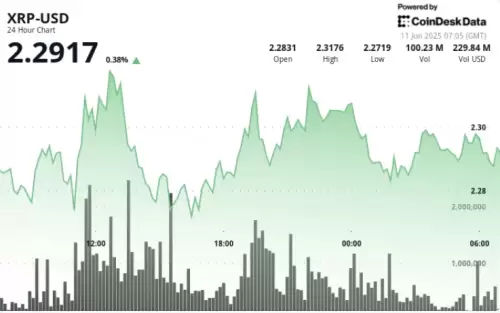 |
|
 |
|
 |
|
 |
|
 |
|
 |
|
 |
|
 |
|
 |
|
 |
|
 |
|
 |
|
 |
|
 |
|
 |
|

In the cryptocurrency domain, renowned for its rapid innovation and competitive spirit, projects are continually vying for attention and recognition. While price movements often steal the limelight, providing a snapshot of market sentiment, they don't necessarily reflect the true measure of a project's vitality and potential for long-term success. To gain a deeper understanding, it's crucial to delve into metrics that quantify a project's technical development and community engagement.
Recently, an X account, Kaspa Daily, undertook an interesting analysis comparing Kaspa and Litecoin across various developer activity metrics.
To ensure a fair comparison, the metrics were normalized by each project's market cap. This step is particularly important considering the significant disparity in economic scale between the two projects. A larger project with a higher market cap would naturally attract more developer attention.
By dividing metrics such as commits, contributors, and improvement proposals by market cap, we can effectively measure innovation per dollar. This approach provides a relative score, highlighting which project is making better use of its size to foster new ideas and technologies.
When examining the numbers through this lens, Kaspa emerges as the clear winner.
Kaspa vs. Litecoin - Developer Activity Per $1 Billion Market CapImage Credit: X Account - Kaspa Daily
Litecoin leads in some of the more historical metrics, like total commits, stars, and forks. But those numbers are heavily influenced by its age and early popularity. Kaspa, despite being much newer, is leading where it counts today - in active development and community contributions.
This analysis showcases the importance of considering multiple factors and performing normalizations to gain a balanced perspective, especially when comparing projects in a constantly evolving and competitive space.
In crypto, price often gets all the attention, but behind every great project is a team of developers writing code, proposing upgrades, and building infrastructure. To really understand which networks are thriving, we need to look at the network internals.
An interesting post by the X account Kaspa Daily takes a different approach to comparing Kaspa and Litecoin. Instead of just comparing them by price or market cap, they looked at developer activity and normalized it by each project's market cap. This gives us a clearer view of who's building more, relative to their economic size.
A $6 billion project should naturally attract more developer attention than one worth $2 billion. So by dividing things like commits, contributors, and improvement proposals by market cap, we can see which project is making better use of its size. It’s a simple way to measure innovation per dollar.
When you look at the numbers through this lens, Kaspa stands out.
Measuring Developer DemandIn a space that rewards new ideas, that's a signal worth paying attention to. As the post notes, Litecoin seems to be in a phase of maintenance, staying aligned with Bitcoin and focusing on stability.
Kaspa, on the other hand, is in a clear building phase, with the team rolling out major upgrades like DAG optimization and throughput scaling.
This analysis provides a fresh perspective on comparing crypto projects, shifting the emphasis from hype to actual developer energy. In this view, Kaspa is clearly punching above its weight.
The post from Kaspa Daily offers a unique insight into the ongoing development efforts of Kaspa and Litecoin. It highlights the impressive pace at which Kaspa's developers are introducing new features and improvements, even when adjusting for the disparity in market capitalization.
This analysis underscores the importance of examining metrics that go beyond price and market cap to truly assess the relative value and potential of crypto projects. In a domain that values innovation and technical prowess, such signals can be crucial for discerning the projects that are most likely to succeed in the long run.
As the crypto ecosystem continues to evolve, comparing projects based on developer activity and other relevant metrics can provide valuable insights for both traders and those interested in the future of blockchain technology.
免責事項:info@kdj.com
提供される情報は取引に関するアドバイスではありません。 kdj.com は、この記事で提供される情報に基づいて行われた投資に対して一切の責任を負いません。暗号通貨は変動性が高いため、十分な調査を行った上で慎重に投資することを強くお勧めします。
このウェブサイトで使用されているコンテンツが著作権を侵害していると思われる場合は、直ちに当社 (info@kdj.com) までご連絡ください。速やかに削除させていただきます。





























































